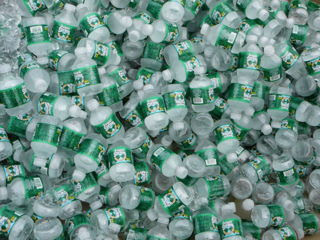
Cynthia Barnett, a journalist at Florida Trend Magazine, has a new book we'd like to bring to your attention, though we haven't read it: Mirage: Florida and the Vanishing Water of the Eastern U.S. (University of Michigan Press: April 2007.
Here's the blurb: "Part investigative reporting, part environmental history, Mirage tells how the eastern half of the nation – historically so wet that early settlers predicted it would never even need irrigation – has squandered so much of its abundant fresh water that it now faces shortages and conflicts once unique to the arid West. Florida’s parched swamps and sprawling subdivisions set the stage for a look at water-supply issues facing America and the globe: water wars, the politics of development, inequities in the price of water, the bottled-water industry, privatization, and new-water-supply schemes."
It is a timely subject. We are in the midst of the worst drought conditions since government agencies in South Florida began maintaining records. Take your showers now. That is only partly in jest.
We have noted in this blog how rampant construction and development in South Florida has stripped the elasticity from the supply and demand for fresh water resources even under normal climate conditions.
Remember: only a year ago, the South Florida Water Management District and US Army Corps of Engineers were dumping as much water as they could to lower levels in Lake Okeechobee--destroying coastal estuaries in the process--in anticipation of another bad hurricane season. Communities and Chambers of Commerce on the west coast of Florida have been in an uproar ever since.
Then there is the matter of climate change and sea level rise, noted by Miami New Times this week. Dr. Harold Wanless, chair of the geology department at the University of Miami, has assembled a powerpoint presentation showing quite clearly that sea level rise has already caused massive changes at the southernmost tip of the Florida peninsula, at Cape Sable.
Conditions of drought and sea-level rise are already causing salt water intrusion in coastal drinking water wells in Lake Worth and Boca Raton. Under conditions of global warming, sooner or later, the situation will be worse. Much worse.
Right now, the US Army Corps of Engineers and State of Florida is considering whether or not to drain the Water Conservation Areas to augment short water supplies— screwing the Everglades before citizens are compelled to curtail usage.
It is a serious question that has not been yet answered, so far as we can tell, by any agency: how much protection of drinking water wells or how much water supply to cities is provided, by draining the water conservation areas?
And still, the counties are doing little to nothing to enforce water conservation measures. According to a recent report by Miami NBC affiliate Channel 10, “Although the South Florida Water Management District has asked local law enforcement agencies to impose fines for residences and businesses that violate the mandated water restrictions, not all city agencies are listening…”
Meanwhile, in Palm Beach County, in Broward County, in Miami-Dade County—despite a massive slowdown in housing markets—local county commissions are pressing ahead with zoning changes that would make it easier to consume valuable wetlands and build more suburban tract developments.
The business publication, Florida Trend, has done a good job highlighting the conflicts between growth, water supply, and the environment.
Although we haven’t read Cynthia Barnett’s book, given its subject matter and the drought, it is a timely subject for summer reading with a nice plastic bottle of water by our side.
No comments:
Post a Comment